How to make money on augmented and virtual reality
How to make money on augmented and virtual reality in Russia? This question seems to me to be one of the most important and urgent for those who are now looking towards these technologies. Therefore, in the framework of the new issue of our friend about the Russian VR-industry VR-Today, we decided to discuss it. Our guests are representatives of famous Russian companies that know how to make money on augmented and virtual realities: Andrey Sudarikov from Playdisplay and Alexander Lavrov from Vizerra .
Under the cut text squeeze from a video watch.
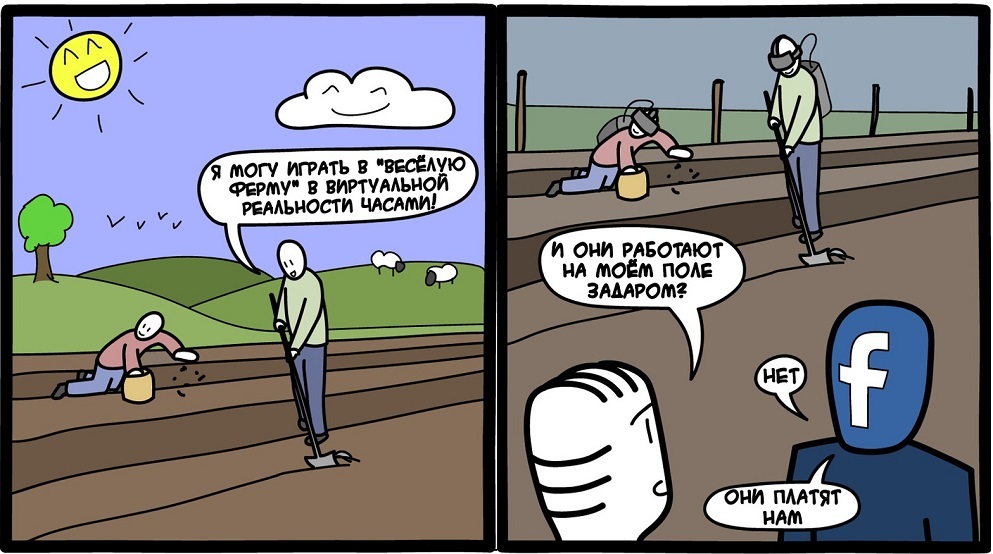
Andrey Sudarikov
')
- Co-founder and creative director of Playdisplay
- I started my way as a graphic designer.
- During my studies, freelance, engaging in literally everything : from creating business cards to designing interiors
- Always sought to create "meaty content"
- In the second year I got carried away with 3DMax
- After graduation, he moved to Moscow, doing various projects until 2010, when Playdisplay was founded .
- The first project in augmented reality was the interactive model of the solar system, which appeared on the screen by reading the information about the planets from special cards. The project is still functioning in the Astrakhan Planetarium.
Alexander Lavrov
- Vizerra CEO
- The cult Star Wars , which he first saw at the age of 7 in the cinema of his native Arzamas, became crucial for Alexander. Sasha was greatly impressed by the spacecraft shown in the legendary film.
- Having entered the medical institute, he saw 3DMax under DOS and SUDDENLY realized that now he can make those flying ships
- Throughout his studies engaged in the visualization of medical films , the production of which was engaged in his institute
- In the process of learning I became interested and became the first certified expert of Adobe After Effects in Eastern Europe, which was rightly appreciated in Moscow
- Taught at RealTime School for almost 5 years, until he pulled on even more “meaty content”
- I managed to get 3 more formations since I moved to Moscow
The initial goal of Vizerra was to create interactive things that are useful for business.

As we found out in the process of dating, Andrei and Alexander came to virtual reality in non-standard and interesting ways. And experts, as you may have guessed, unite the very “fleshy content” that they constantly mention. Well, let's find out which projects of each of the companies turned out to be the most “meaty”, that is, commercially successful, to date.
For Vizerra, the most ambitious and long-lasting project was cooperation with the Olympic Games , which lasted 6 years and allowed the company to actually grow and settle in the market. It was this project that helped the company withstand the 2008 crisis. The company had a task: to interactively visualize 600 square kilometers of territory in 3D.

After the first year of working on the project, the system no longer only functioned stably, but also allowed to begin implementing more detailed infrastructure (volunteers, athletes, ATMs etc), which allowed Vizerra to create a giant, detailed system that representatives of the Olympic Games successfully use with partners. The project began (as Alexander successfully joked) as a “virtual reality with low immersion” - that is, without glasses and helmets. But later, all this functionality was implemented in parallel with the emergence and development of the platform, which is currently operating on 4 engines and with which Vizerra successfully work to this day.

Of the recent successful projects, Alexander calls the Military Equipment Exhibition for the Exhibition of Economic Achievements and the Virtual Museum of Architecture - the best museum application in Europe that has attracted the attention of UNESCO.

From the nearest plans - the company focuses on educational and industrial projects. Alexander also spoke about projects based on the “B2C via B2B or B2G” model, when a particular product is for a final audience, but with a large client as a customer — most of the large projects of the company were implemented exactly this way.
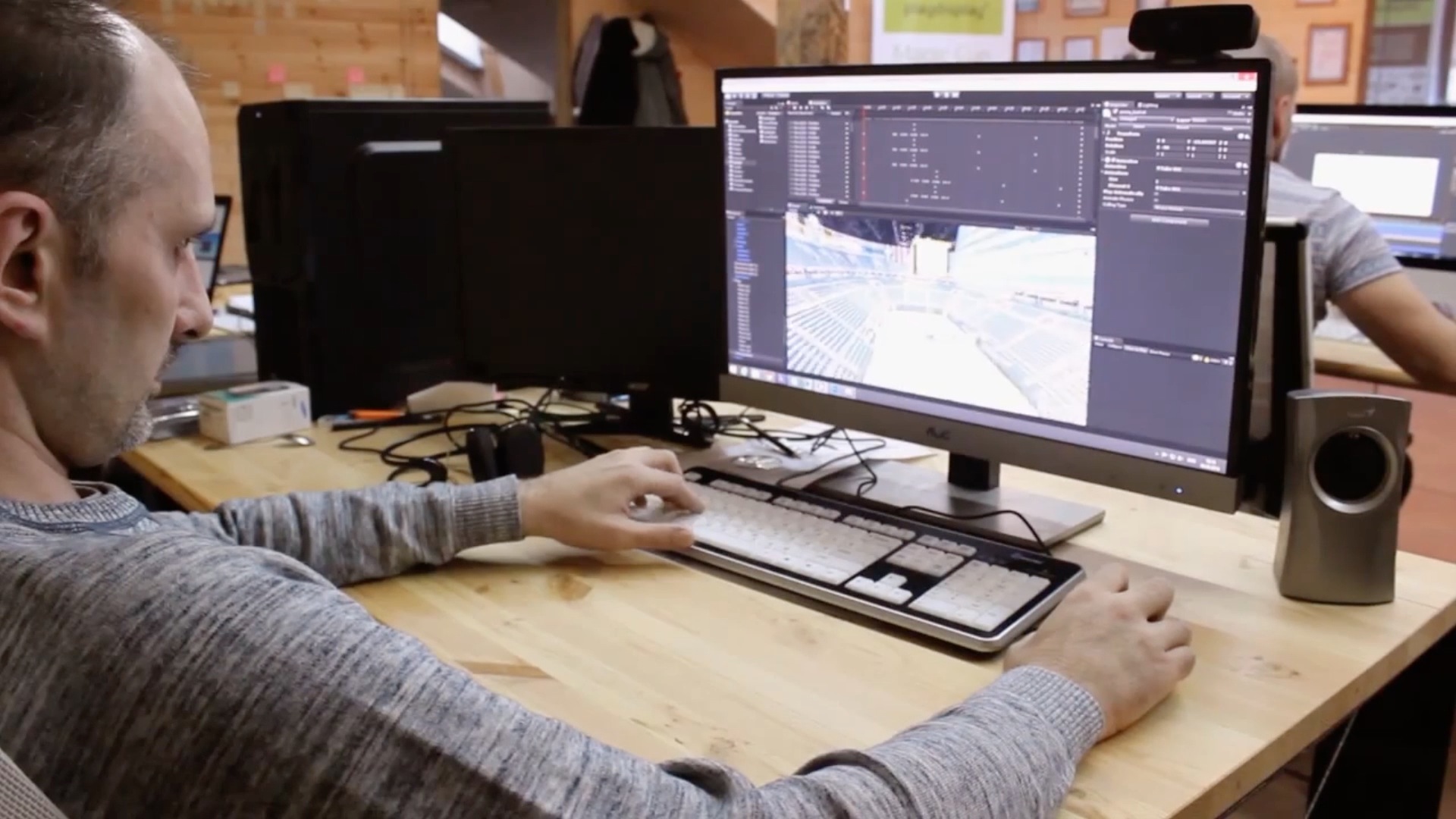
And according to Andrew, Playdisplay projects are not so long-term. Customers turn to them when “it’s already a fire,” and urgent help is needed (“the customer is ready to put out the fire with what? Of course with money,” Andrei jokes). According to their creative director, Playdisplay is ready to complete work in 8 days, for which American and European companies are given 8 months each, and in Russian - a month.

From economically successful projects, Andrei calls cooperation with Kazakhstan Railways, which ordered a model of a giant Ice Palace being prepared at that time from the company, in order to personally demonstrate it to Nursultan Nazarbayev.

In augmented reality, Playdisplay implemented the Arena with the display on the big screen and control through a rotary sensor on the table before the projection. Having implemented such an ambitious project with the efforts of 16 people (10 of them are on outsourcing) in 8 days (besides the design itself, the studio’s task was to produce a video about the development of hockey in Kazakhstan, search for a huge TV, etc.), Playdisplay earned several hundred thousand dollars and made customers happy. In total, according to Andrew, he had already worked with three presidents (he met with two of them personally). In 99% of cases, Playdisplay needs to do the task very quickly, very cool and without a single error, and at the same time be ready to solve any critical situations.
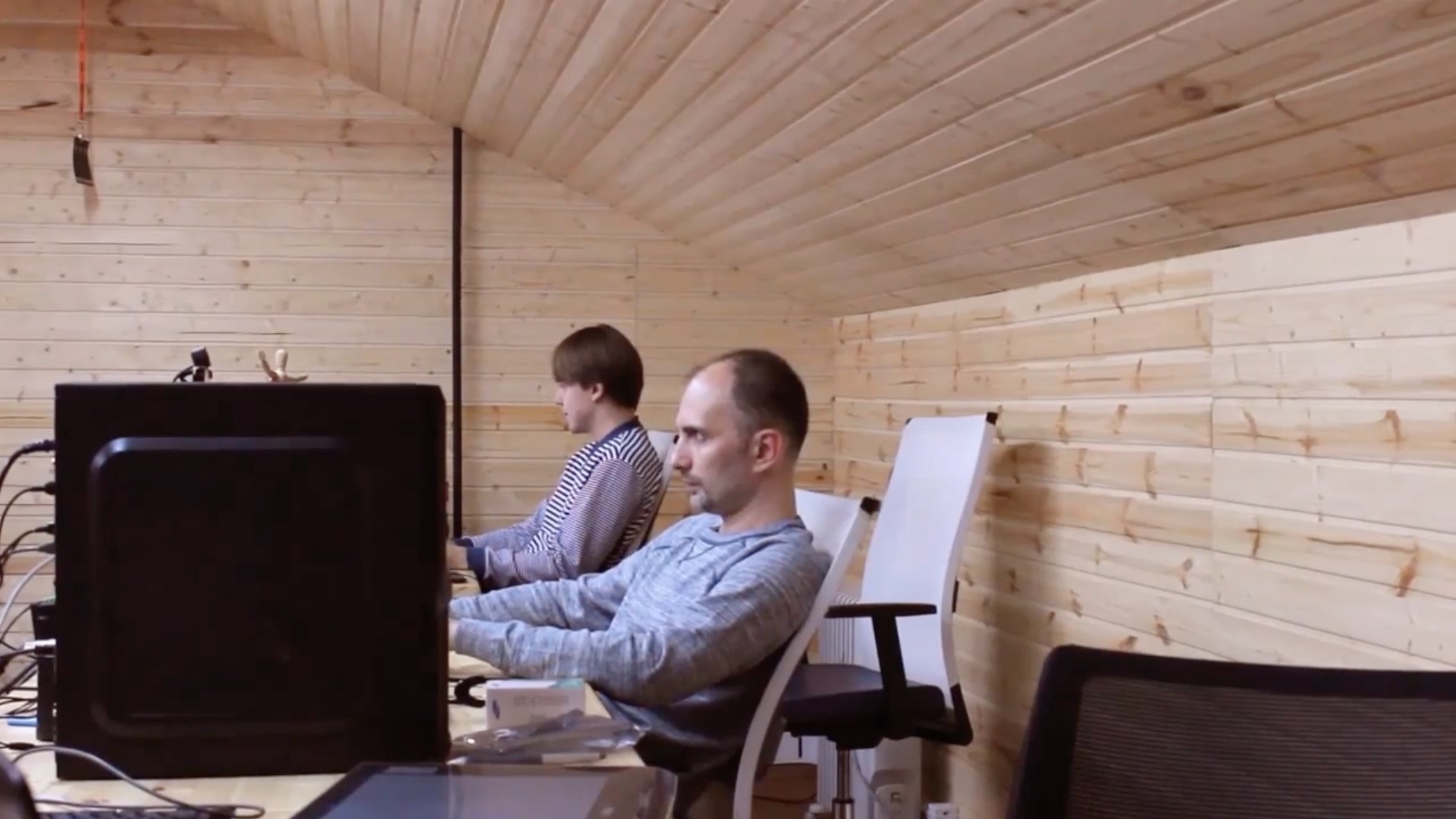
There are currently 15 people in Playdisplay , Vizerra has a little more than about 30. Both companies often outsource professionals to solve specific tasks (from coding to animation and modeling). Let's take a closer look at the technologies that Playdisplay and Vizerra use to implement projects.
The first Playdisplay project was implemented using the OGRE (Object-Oriented Graphics Rendering Engine). For large installations, despite the availability and popularity of mobile devices, the company still uses computers (cool graphics and large screens). Taking into account that the project will be available worldwide, Playdisplay focuses on advanced technologies in educational and entertainment solutions (whether it’s Samsung VR or Microsoft HoloLens) .
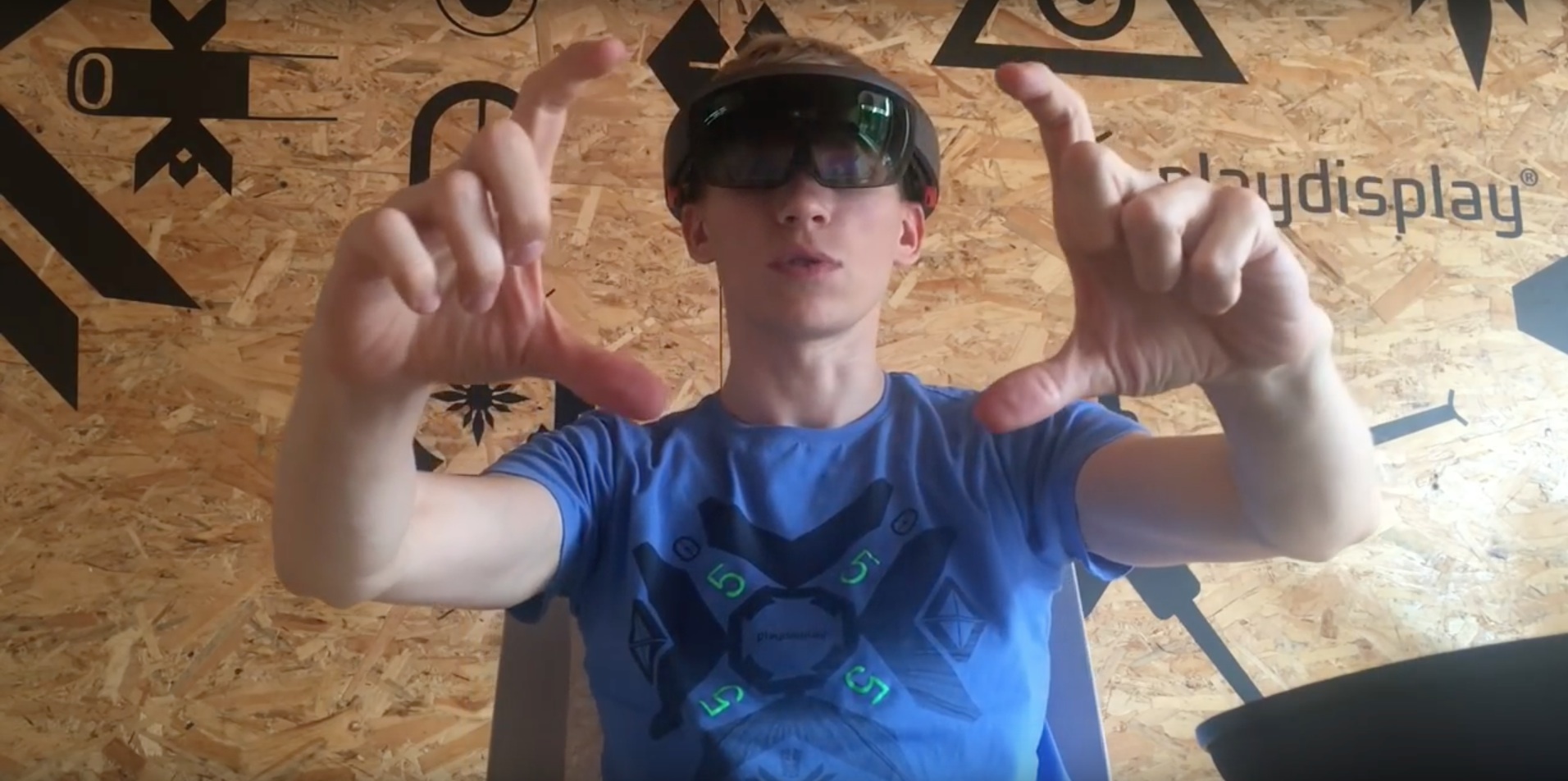
Vizerra, on the other hand, started with the well-known Unity 3D , on which 30-50 projects were implemented, and as a result, the company is now working with the third version of Unity. According to Alexander, they use all possible devices available on the market, as they always go from the client and the task assigned to the company.
How do companies choose customers? Vizerra try to focus on the mass market and make a mass product. The company rarely deals with B2C, which Alexander explains is at great risk, although they have such products, for example, their own application for architects.

Playdisplay B2B and B2C are also intertwined - for example, by launching the “live colorings” project, where the car model painted by you then “comes alive” and you can participate in it in races, they were able to attract customers from a completely different field (construction business) thanks to that that one of these colorings fell into their hands. The company loves to make both museum and exhibition projects, as well as smaller augmented reality - eggs with surprises, small toys, the same coloring.
Knowing who and why refers to Vizerra and Playdisplay, as well as about the methods of translating customer ideas into reality, the time has come to finally answer the question: so how do you make money on AR and VR?
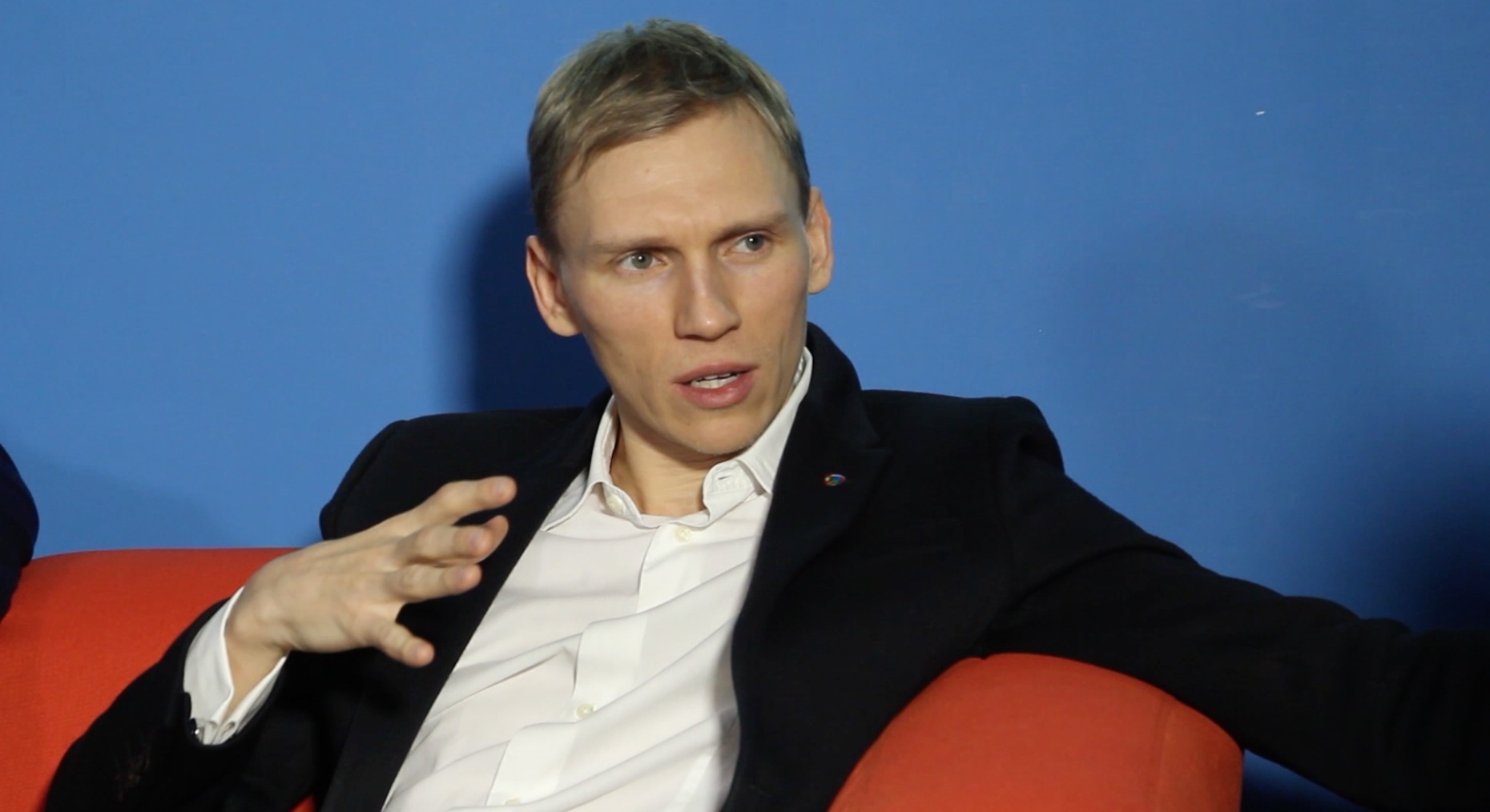
Andrew advises:
- To earn not on the client, but together with the client;
- Never to do design for the sake of design (the ideal deal: the function is executed, but the object does not exist). The functional should always be at the head of the table;
- “To sell a business card, a website or augmented reality is the same procedure, if you understand what it is for, and how to do it”;
- It is necessary to work not so much for your customer as for his clients - to understand their needs and desires.
Alexander adds that the companies Vizerra and Playdisplay are successful due to the fact that they see the whole way of the project and always think together with the customer.
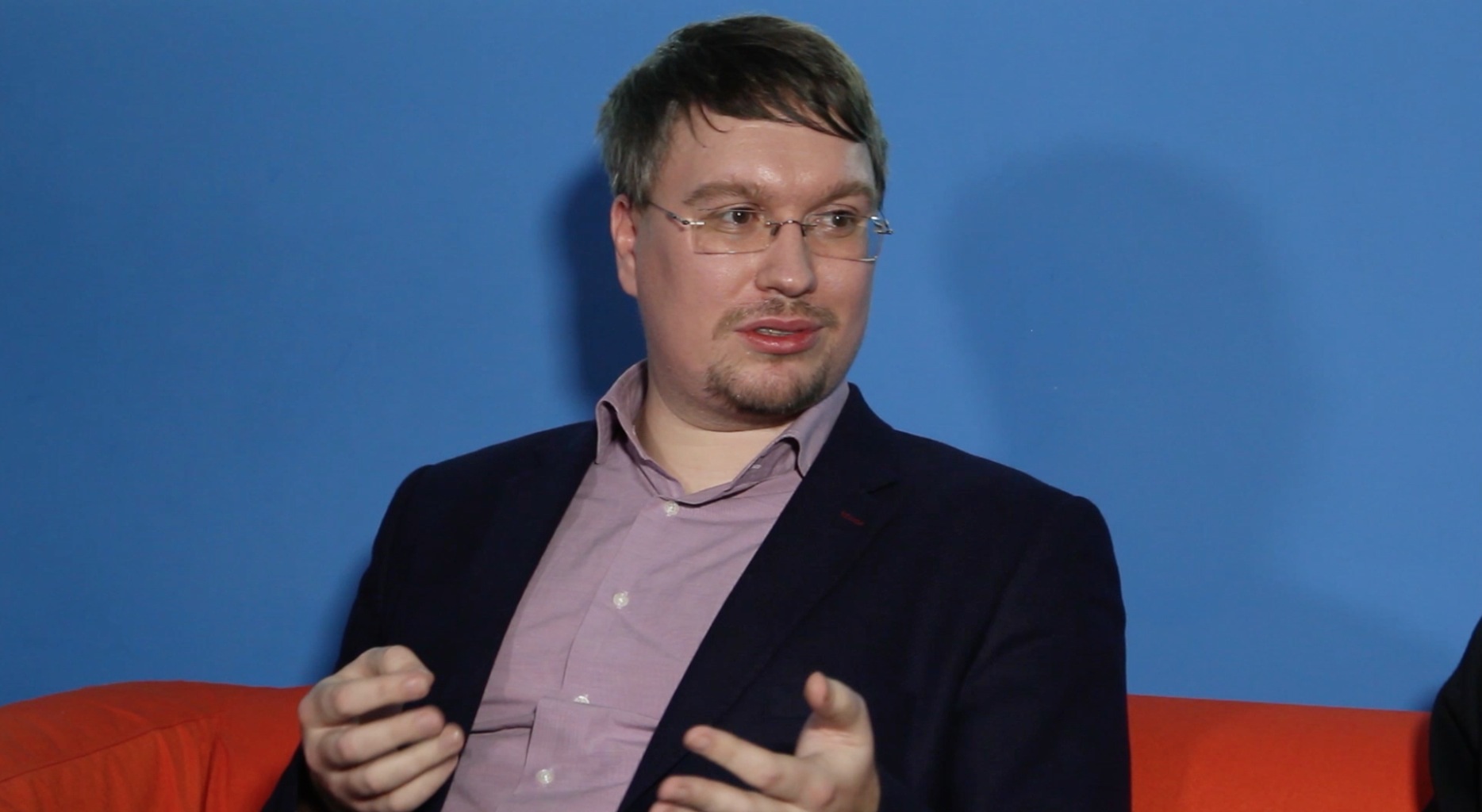
It is clear that over the years of successful work, both companies have been able to earn recognition and credibility in the market. But what about someone who is just going to "get into the game"? Alexander suggests that first of all it is necessary to understand who your potential client is, and why you are better than other players. Now the situation is such that with the advent of HYIP on VR and AR, every day more and more people and companies appear in this area, and the competition is growing accordingly. But it is important to understand that Vizerra and Playdisplay do not create technologies - they are created and implemented by other people. Alexander and Andrei in their companies create the final product, and if you want to work with the B2B market, and not become a platform, then you should strive for this state of affairs. According to Alexander, it is worth strongly to separate business and development, and it is an understanding of which of these aspects you are strong in to help you avoid many problems in the future. Andrew insists that in any business the key aspect is sales, not production. Selling a product is 50% of the case, half the success. The success of any major project of the company is not only the specific time spent on production and the technical aspect, but also all the time you spent on brand promotion, earning a reputation and a name in the market and directly negotiating with the customer - that's all also very important.
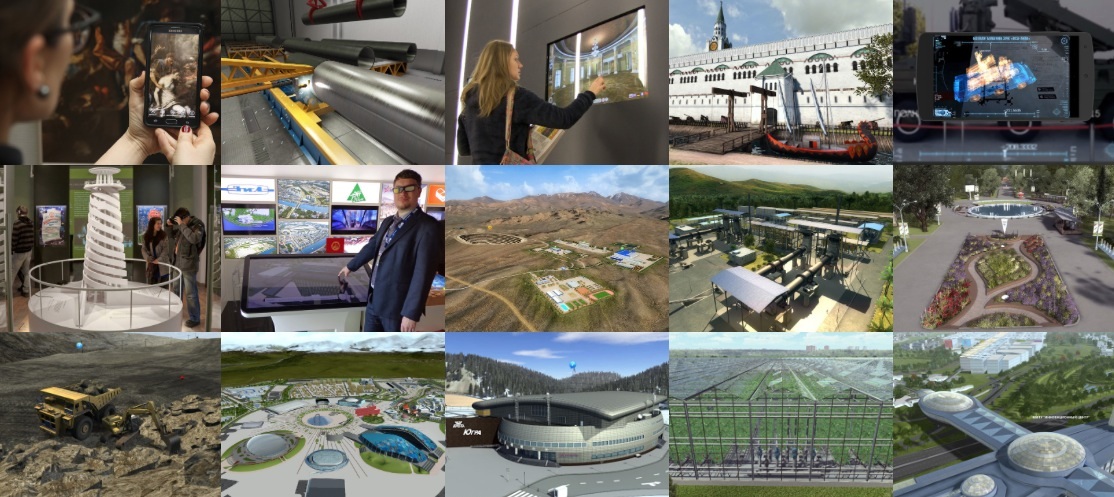
Alexander insists: there are few normal companies on the market, but now those who are trying with all their might to sell slag (due to the hyip that has appeared in the industry) have plenty. And this, unfortunately, serves as a kind of obstacle - for people who have had time to cooperate with such unscrupulous companies, it will be difficult to explain how you are better and why you should work with your company. Vizerra had a client for whom they became 10 companies of a similar plan, and they decided to work with them only because one of Vizerra’s clients gave positive recommendations and literally said that “they are good people” . As a result, after learning about how competitors dealt with this company, Vizerra did its best to do the work benignly and on time - naturally, since then this company has been cooperating only with them.

Alexander responds very positively to the international AR and VR market and the place of Russian companies in this market - the development of foreign projects makes sense even on the basis of the current economic situation in the world. Competition is present in both B2C and B2B areas (more in B2B). Andrei is also positive: Hip only grows, and with it the demand - approximately by 30% per year , and (according to his forecasts) in 3-5 years all the literature in one way or another will be equipped with augmented reality (especially if VR glasses can look just like regular Ray-Bans). A great example is the Pokemon GO! , thundered all over the world, after which similar applications began to be ordered literally EVERYTHING - owners of a certain farm, who offered “Pokemon GO! in the world of cows . " The popularization of AR and VR technologies is very important now - since to this day people are counting on getting an arsenal of Iron Man with his JARVIS or at least the Terminator.

Alexander and Andrei advise everyone to join this sphere: “First sell, then do.” Yes, you have to go around 100 offices, show and tell about your product, type in a portfolio and post it on the site. You should not invest in long-term development, not having the confidence that you will be able to realize the final product. Perhaps a good solution would be to first work in a company that successfully deals with AR and VR, look at the industry from the inside and gain valuable experience, and then start something different. Also, sales experience is vital. If responsibly, wisely and in a good way prudently approach this issue, the result will not take long. And one more valuable advice - do not pursue cheap! Your competitive advantage will be a worthy project that will be implemented without fakaps and unnecessary nerves.

If you feel that you are not yet ready to open your project (there is not enough sales experience, ambition is not important), but you want to work in the field of augmented and virtual reality - feel free to post your resume on HeadHunter or any other resource, because in the industry, According to Andrey and Alexander, there is a disastrous lack of intelligent specialists. And whether you come to the company as a leading specialist, or a young Padawan, depends directly on your skills and abilities (and every day requests to candidates only grow, again, due to the high competition). And, of course, from your insatiable desire to work, grow and develop in the field of augmented and virtual reality, and in what I wish you success!

And remember: augmented and virtual reality is not something separate! You can work on any project, introducing and using at the same time AR / VR. So do what you love and know how, but with the use of new technologies!
On my own behalf, I’ll add that speaking of doing what you love, for me it is first and foremost a game industry. If this is the case for you, I invite you on February 11 to come to our open event on the basics of creating games at VSBI, where there will be free lectures on game design all day long. Details and registration here .
Under the cut text squeeze from a video watch.

Andrey Sudarikov
')
- Co-founder and creative director of Playdisplay
- I started my way as a graphic designer.
- During my studies, freelance, engaging in literally everything : from creating business cards to designing interiors
- Always sought to create "meaty content"
- In the second year I got carried away with 3DMax
- After graduation, he moved to Moscow, doing various projects until 2010, when Playdisplay was founded .
- The first project in augmented reality was the interactive model of the solar system, which appeared on the screen by reading the information about the planets from special cards. The project is still functioning in the Astrakhan Planetarium.
Alexander Lavrov
- Vizerra CEO
- The cult Star Wars , which he first saw at the age of 7 in the cinema of his native Arzamas, became crucial for Alexander. Sasha was greatly impressed by the spacecraft shown in the legendary film.
- Having entered the medical institute, he saw 3DMax under DOS and SUDDENLY realized that now he can make those flying ships
- Throughout his studies engaged in the visualization of medical films , the production of which was engaged in his institute
- In the process of learning I became interested and became the first certified expert of Adobe After Effects in Eastern Europe, which was rightly appreciated in Moscow
- Taught at RealTime School for almost 5 years, until he pulled on even more “meaty content”
- I managed to get 3 more formations since I moved to Moscow
The initial goal of Vizerra was to create interactive things that are useful for business.

As we found out in the process of dating, Andrei and Alexander came to virtual reality in non-standard and interesting ways. And experts, as you may have guessed, unite the very “fleshy content” that they constantly mention. Well, let's find out which projects of each of the companies turned out to be the most “meaty”, that is, commercially successful, to date.
For Vizerra, the most ambitious and long-lasting project was cooperation with the Olympic Games , which lasted 6 years and allowed the company to actually grow and settle in the market. It was this project that helped the company withstand the 2008 crisis. The company had a task: to interactively visualize 600 square kilometers of territory in 3D.

After the first year of working on the project, the system no longer only functioned stably, but also allowed to begin implementing more detailed infrastructure (volunteers, athletes, ATMs etc), which allowed Vizerra to create a giant, detailed system that representatives of the Olympic Games successfully use with partners. The project began (as Alexander successfully joked) as a “virtual reality with low immersion” - that is, without glasses and helmets. But later, all this functionality was implemented in parallel with the emergence and development of the platform, which is currently operating on 4 engines and with which Vizerra successfully work to this day.

Of the recent successful projects, Alexander calls the Military Equipment Exhibition for the Exhibition of Economic Achievements and the Virtual Museum of Architecture - the best museum application in Europe that has attracted the attention of UNESCO.

From the nearest plans - the company focuses on educational and industrial projects. Alexander also spoke about projects based on the “B2C via B2B or B2G” model, when a particular product is for a final audience, but with a large client as a customer — most of the large projects of the company were implemented exactly this way.

And according to Andrew, Playdisplay projects are not so long-term. Customers turn to them when “it’s already a fire,” and urgent help is needed (“the customer is ready to put out the fire with what? Of course with money,” Andrei jokes). According to their creative director, Playdisplay is ready to complete work in 8 days, for which American and European companies are given 8 months each, and in Russian - a month.

From economically successful projects, Andrei calls cooperation with Kazakhstan Railways, which ordered a model of a giant Ice Palace being prepared at that time from the company, in order to personally demonstrate it to Nursultan Nazarbayev.

In augmented reality, Playdisplay implemented the Arena with the display on the big screen and control through a rotary sensor on the table before the projection. Having implemented such an ambitious project with the efforts of 16 people (10 of them are on outsourcing) in 8 days (besides the design itself, the studio’s task was to produce a video about the development of hockey in Kazakhstan, search for a huge TV, etc.), Playdisplay earned several hundred thousand dollars and made customers happy. In total, according to Andrew, he had already worked with three presidents (he met with two of them personally). In 99% of cases, Playdisplay needs to do the task very quickly, very cool and without a single error, and at the same time be ready to solve any critical situations.

There are currently 15 people in Playdisplay , Vizerra has a little more than about 30. Both companies often outsource professionals to solve specific tasks (from coding to animation and modeling). Let's take a closer look at the technologies that Playdisplay and Vizerra use to implement projects.
The first Playdisplay project was implemented using the OGRE (Object-Oriented Graphics Rendering Engine). For large installations, despite the availability and popularity of mobile devices, the company still uses computers (cool graphics and large screens). Taking into account that the project will be available worldwide, Playdisplay focuses on advanced technologies in educational and entertainment solutions (whether it’s Samsung VR or Microsoft HoloLens) .

Vizerra, on the other hand, started with the well-known Unity 3D , on which 30-50 projects were implemented, and as a result, the company is now working with the third version of Unity. According to Alexander, they use all possible devices available on the market, as they always go from the client and the task assigned to the company.
How do companies choose customers? Vizerra try to focus on the mass market and make a mass product. The company rarely deals with B2C, which Alexander explains is at great risk, although they have such products, for example, their own application for architects.

Playdisplay B2B and B2C are also intertwined - for example, by launching the “live colorings” project, where the car model painted by you then “comes alive” and you can participate in it in races, they were able to attract customers from a completely different field (construction business) thanks to that that one of these colorings fell into their hands. The company loves to make both museum and exhibition projects, as well as smaller augmented reality - eggs with surprises, small toys, the same coloring.
Knowing who and why refers to Vizerra and Playdisplay, as well as about the methods of translating customer ideas into reality, the time has come to finally answer the question: so how do you make money on AR and VR?

Andrew advises:
- To earn not on the client, but together with the client;
- Never to do design for the sake of design (the ideal deal: the function is executed, but the object does not exist). The functional should always be at the head of the table;
- “To sell a business card, a website or augmented reality is the same procedure, if you understand what it is for, and how to do it”;
- It is necessary to work not so much for your customer as for his clients - to understand their needs and desires.
Alexander adds that the companies Vizerra and Playdisplay are successful due to the fact that they see the whole way of the project and always think together with the customer.

It is clear that over the years of successful work, both companies have been able to earn recognition and credibility in the market. But what about someone who is just going to "get into the game"? Alexander suggests that first of all it is necessary to understand who your potential client is, and why you are better than other players. Now the situation is such that with the advent of HYIP on VR and AR, every day more and more people and companies appear in this area, and the competition is growing accordingly. But it is important to understand that Vizerra and Playdisplay do not create technologies - they are created and implemented by other people. Alexander and Andrei in their companies create the final product, and if you want to work with the B2B market, and not become a platform, then you should strive for this state of affairs. According to Alexander, it is worth strongly to separate business and development, and it is an understanding of which of these aspects you are strong in to help you avoid many problems in the future. Andrew insists that in any business the key aspect is sales, not production. Selling a product is 50% of the case, half the success. The success of any major project of the company is not only the specific time spent on production and the technical aspect, but also all the time you spent on brand promotion, earning a reputation and a name in the market and directly negotiating with the customer - that's all also very important.

Alexander insists: there are few normal companies on the market, but now those who are trying with all their might to sell slag (due to the hyip that has appeared in the industry) have plenty. And this, unfortunately, serves as a kind of obstacle - for people who have had time to cooperate with such unscrupulous companies, it will be difficult to explain how you are better and why you should work with your company. Vizerra had a client for whom they became 10 companies of a similar plan, and they decided to work with them only because one of Vizerra’s clients gave positive recommendations and literally said that “they are good people” . As a result, after learning about how competitors dealt with this company, Vizerra did its best to do the work benignly and on time - naturally, since then this company has been cooperating only with them.

Alexander responds very positively to the international AR and VR market and the place of Russian companies in this market - the development of foreign projects makes sense even on the basis of the current economic situation in the world. Competition is present in both B2C and B2B areas (more in B2B). Andrei is also positive: Hip only grows, and with it the demand - approximately by 30% per year , and (according to his forecasts) in 3-5 years all the literature in one way or another will be equipped with augmented reality (especially if VR glasses can look just like regular Ray-Bans). A great example is the Pokemon GO! , thundered all over the world, after which similar applications began to be ordered literally EVERYTHING - owners of a certain farm, who offered “Pokemon GO! in the world of cows . " The popularization of AR and VR technologies is very important now - since to this day people are counting on getting an arsenal of Iron Man with his JARVIS or at least the Terminator.

Alexander and Andrei advise everyone to join this sphere: “First sell, then do.” Yes, you have to go around 100 offices, show and tell about your product, type in a portfolio and post it on the site. You should not invest in long-term development, not having the confidence that you will be able to realize the final product. Perhaps a good solution would be to first work in a company that successfully deals with AR and VR, look at the industry from the inside and gain valuable experience, and then start something different. Also, sales experience is vital. If responsibly, wisely and in a good way prudently approach this issue, the result will not take long. And one more valuable advice - do not pursue cheap! Your competitive advantage will be a worthy project that will be implemented without fakaps and unnecessary nerves.

If you feel that you are not yet ready to open your project (there is not enough sales experience, ambition is not important), but you want to work in the field of augmented and virtual reality - feel free to post your resume on HeadHunter or any other resource, because in the industry, According to Andrey and Alexander, there is a disastrous lack of intelligent specialists. And whether you come to the company as a leading specialist, or a young Padawan, depends directly on your skills and abilities (and every day requests to candidates only grow, again, due to the high competition). And, of course, from your insatiable desire to work, grow and develop in the field of augmented and virtual reality, and in what I wish you success!

And remember: augmented and virtual reality is not something separate! You can work on any project, introducing and using at the same time AR / VR. So do what you love and know how, but with the use of new technologies!
On my own behalf, I’ll add that speaking of doing what you love, for me it is first and foremost a game industry. If this is the case for you, I invite you on February 11 to come to our open event on the basics of creating games at VSBI, where there will be free lectures on game design all day long. Details and registration here .
Source: https://habr.com/ru/post/319574/
All Articles